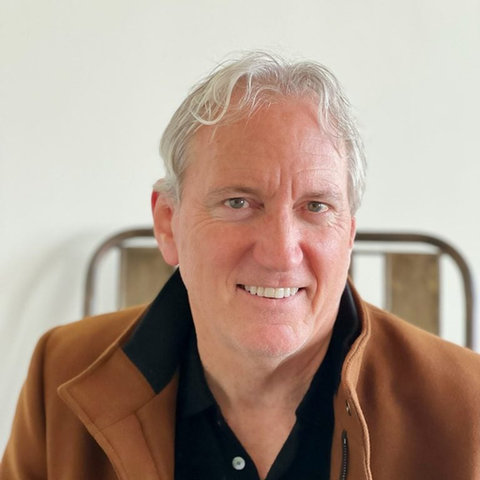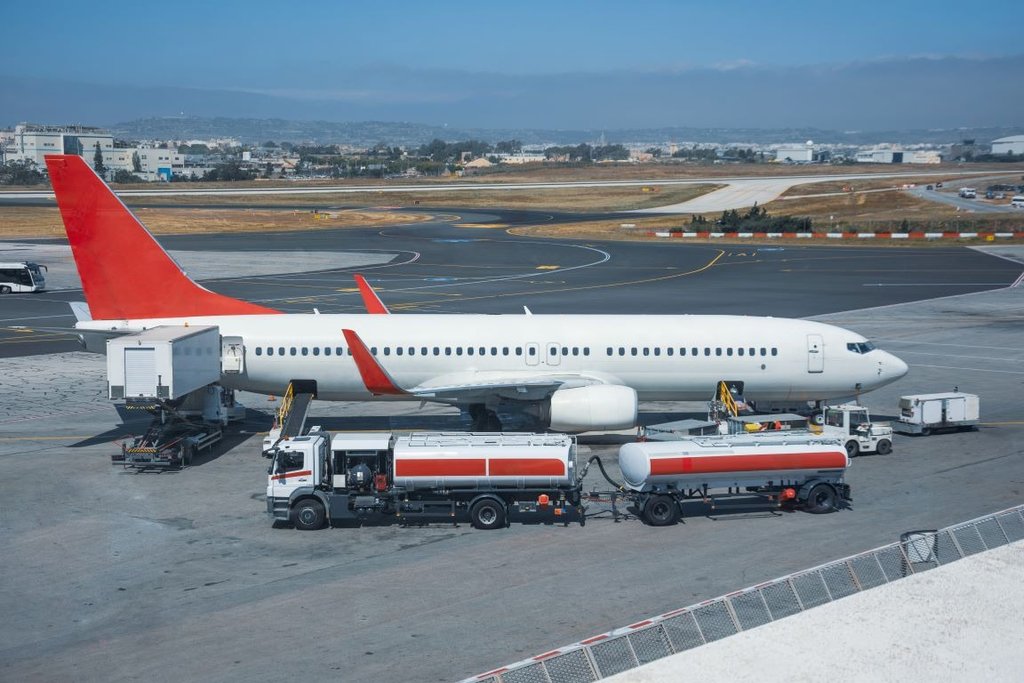Interview
“Profits, profits, profits”: why the aviation industry is struggling to decarbonise
In a conversation with Vance Hilderman, CEO of AFuzion, an aviation certification consultancy, Smruthi Nadig investigates the costs of decarbonising the aviation sector, its challenges, and using alternative fuels.

Vance Hilderman, CEO of AFuzion
Over 100 countries at COP28 in Dubai last year agreed to a goal for emissions reductions from the global aviation industry by 2023 by incorporating lesser polluting fuels. While China and Russia voiced some concerns about the impact of this on their economies, many countries agreed to tackle harmful emissions through the decarbonisation of the aviation industry.
The goal has called for 5% lower carbon emissions through using ‘cleaner’ fuels like sustainable aviation fuel (SAF) by 2030. A recurring issue with the sector remains as companies make insufficient efforts to achieve the targets. While sustainable aviation fuel, hydrogen fuel cells and electrification are the common solutions raised, a Virgin Atlantic plane from London to New York experimented with a blend of waste cooking oil, animal fats and other non-traditional fuels last year.
In this interview, Smruthi Nadig talks to Vance Hilderman, CEO of aviation certification consultancy AFuzion, about the potential for decarbonising the aviation industry by upgrading aircraft engines, using sustainable aviation fuels and electrification. Vance also highlights the challenges and costs of certifying new aircraft and the role of emissions and pollutants in safety certification.
Smruthi Nadig: As an expert in certification on safety-critical airborne software and hardware systems, would you say upgrading aircraft engines has a greater decarbonising potential?
Vance Hilderman: We’re doing so many things on aircraft efficiency, [except] electric cars – cars have largely not improved. The challenge was that aircraft are so expensive, $50m to $300m each, that we don’t replace them often. So, if we look at the average age, unfortunately, we’ve got some fairly polluting engines out there. There are about 30,000 commercial engines, and that’s a 100 billion dollars and more investment. But we can’t simply replace these nearly as fast as cars. We get short-range and mid-range electric aircraft, but we have clients on both the short and mid-range long-range, which will be a challenge.
Only a rich airline like Emirates or Qatar Airways could afford that. A big challenge is certification cost. When you buy an aircraft, that first aircraft is certified. The other aircraft of that model are replicated. So, that first aircraft will cost about $5bn to develop. The certification costs double that, another $5bn. So, to certify new aircraft adds hundreds of millions for a minor modification, up to $5bn for a major new aircraft, just the certification. When we have new engines, we’ve got recertification. So, the question is, is it minor or major? Well, it’s pretty significant. The airlines want someone else to pay for that. Well, everybody wants someone else to pay for it.
Smruthi Nadig: As part of safety certification, are emissions and other pollutants considered at any point?
Vance Hilderman: It’s not, unfortunately, and certification is purely technical. There’s no [difference] in cost if you had a $1 aircraft or a trillion-dollar aircraft, so we don’t look at political aspects, what we call the subjective. There’s nothing on the board with the [Federal Aviation Association] FAA for certification. So, if it’s going to come, it won’t come from the FAA. It won’t come from China, and it won’t come from Transport Canada.
Smruthi Nadig: In various governments, we have recently seen an increase in sustainable aviation fuels to decarbonise the sector. Is it sustainable or just greenwashing?
Vance Hilderman: When we look at electric cars, we think, oh, my gosh, it’s non-polluting. But no, you’ve got to look at the numbers. If you look at the fabrication, [it varies]. And where’s that electrical coming from? Many states of America and Europe have large differences in where your electricity comes from.
The net effect of that is nonsensical. You’re increasing the pollutants, so now sustainability is interesting. There are different grades of sustainable fuel. How are they manufactured? If we use a lot of energy to manufacture a litre of sustainable fuel, then we’re kidding ourselves. And the degree is not as important as the ability to step back and say the overall ecosystem impact. We [can] create new sustainable fuels that will help reduce pollutants by 15 to 20%. Overall, that can be used on existing engines.

An aircraft refueling at the airport terminal before service. Credit: aapsky / Getty images
We’ve seen those trials that work, and that’s the real path forward. So, gradually introducing that [is key]. And so, when we look at electric and autonomous cars, we won’t have autonomous cars driving everywhere tomorrow. We’re going to [gradually] get most of the effects of sustainability by addressing 80% and not thinking of 100% solution, just like cars.
Smruthi Nadig: Are SAFs, and in the future, hydrogen or electric-powered flights, going to help governments achieve their target for net zero by 2050?
Vance Hilderman: Absolutely. If we look at electricity for its short range, that would be tremendous if we did not have coal-powered electricity. If we can do sustainable electricity with wind and solar, it’s becoming much more cost-effective in many places.
And we must have multiple attacks for sustainable energy. It’s sustainable fuels, clean electrification, improved aircraft design and more efficient flight planning. Electrification means aircraft design and better engines. Ultimately, we can double the number of people flying in 15 years without greater environmental impact. That’s cool. That’s vastly better than cars are doing today. If we look at the overall impact of mining for the batteries and where that electric energy comes from, we’re recruiting much better than automobiles.But is it enough?
Smruthi Nadig: What do you think about the condensed battery created by the Chinese battery giant CATL, calling it a new electrification scenario for passenger aircraft? Does that have any scope?
Vance Hilderman: Yeah, it’s cool. I haven’t seen the physical actual results of a produced battery. I don’t think anyone has. There’s so much great technology coming from India, China and Northern Europe. If that new device from China is half as good as they say, that’s a game changer. My question is, can we produce it efficiently?
We need to have a much greater density, and hydrogen cells do that. But that’s a big recertification redesign cost in the aircraft that would be $15 billion to $20 billion to create the first all-hydrogen aircraft.
You can do that in the lab. But there’s a reason that companies like Boeing and Airbus are very efficient. We’re looking at $20 billion to create a hydrogen aircraft; it would be worth it [but] no company will do that. So, we’d have to get a big government grant. And that’s largely illegal in the US. Now we have the blended-wing aircraft, the jet zero. My company, Afuzion, did a lot of safety analyses. We’re a big supplier of the engineering design on Jet Zero, so we’re biased. Still, that blended wing should easily produce a 30% to 40% improvement in efficiency, and it runs on 100% sustainable fuels.
Smruthi Nadig: A Virgin Atlantic plane powered by a blend of waste cooking oil, animal fats and other non-traditional fuels flew from London to New York on November 28. Is this a distraction big companies create, or are these real solutions to climate change?
Vance Hilderman: I’ve always thought Richard Branson [founder of the Virgin Group] has had the best life in the world. And now maybe Jeff Bezos [founder of Amazon] is trying to emulate that.
Richard Branson makes some big claims and is very good at public relations promotion. I think it’s very good, but I don’t think that’s the answer. A wide mixture of fuels has a wide mixture of potential results. [Suppose] we will use that wide mixture of cooking oils and disposable fuels. Let’s do that for automobiles because you stop on the road if your fuel injector doesn’t work. But let’s put that on the cars that use 20 times more fuel than aircraft. Would you call it a distraction big companies are creating, or would these be like real solutions?
I don’t think it’s meaningful [when] we look at the collection costs, the sorting, the grading cost, the evaluation for aviation. I don’t think that’s part of the solution for aviation. Sustainable fuels control [higher] quality.
Smruthi Nadig: This year, it was reported that the UK Government gave ExxonMobil free CO2 permits worth £160m even though the company declared profits of £46.6bn for 2022. What policies should governments prioritise to mitigate the aviation industry’s environmental impact?
Vance Hilderman: Governments need to have a longer-term view, more strategic, but an evolution path that starts tomorrow, not 20 years down the road, and not just a grant of money. Companies have three priorities — profits, profits and profits. So [social policy] has to come from the government. The government must set specific targets and say, ‘Exxon, we need you to promote sustainable fuels by not giving you money but a tax reduction that increases your profits if you create this many litres of sustainable fuel used in aviation in 2024’. [And they should] say, ‘Exxon, you have next week, next month, to make a result, and it has to be by next year, or you don’t get the tax credit’. Companies love that tax credit because of those three top priorities, so they’re motivated by that.
It’s not going to help because when individual passengers buy the ticket, how many buy the carbon credit? 1%. Does that carbon credit do any good? No, it doesn’t. We’ve shown many studies independent of environmentalists that say it harms more and [call it] a “crime credit”.
Smruthi Nadig: What do you think about the COP28 target in Dubai for lowering carbon emissions using SAFs by 2030?
Vance Hilderman: We call them goals versus requirements in aviation. Goals are wonderful. The aircraft shall be safe. The aircraft shall never crash. Those are goals. They’re not actionable. They’re not realistic because it’s not an actual requirement. So, great political goal-setting looks good on paper. It’s completely missing the requirements and a strategic plan, which makes it worse than worthless. The reason it’s worse than worthless is because it’s fake. And everybody can point to it, the politicians can point to and say ‘look, we have that [or] there’s nothing there’. [In my] opinion, I think it’s embarrassing.